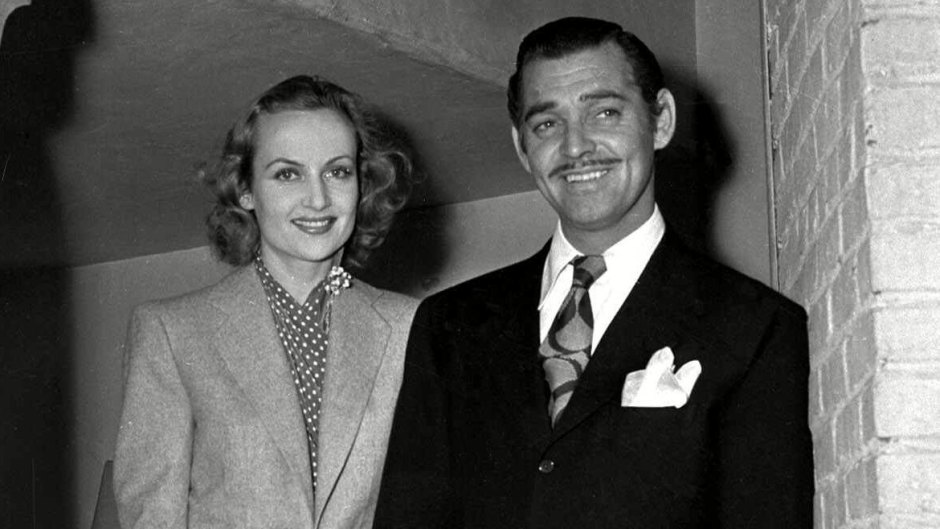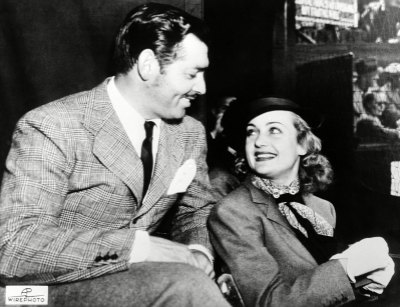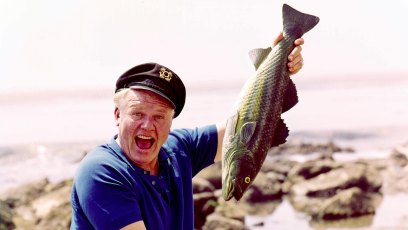
AP/Shutterstock
Clark Gable Never Got Over Wife Carole Lombard’s Tragic Death at 33: ‘They Lived a Peaceful Life’
At noon, three days after Carole Lombard died along with 21 others in a plane crash, the employees of all movie studios shared a moment of silence as “Taps” was played. In Washington, the Senate paused to hear a tribute lauding the actress for raising $2 million in war bonds a week earlier. President Roosevelt sent a telegram to her grieving husband, Clark Gable, calling Carole a friend and great patriot.
Carole’s death in 1942 at just 33 years old shocked the world and extinguished one of Hollywood’s most luminous lights — both on and off-screen. “I love life,” said the actress, who found her niche starring in the screwball comedies of the 1930s, including My Man Godfrey and Nothing Sacred. “I get a kick out of everything. If I don’t love what I’m doing, I don’t do it.”
A former tomboy from Indiana, Carole moved west as a child and began acting early — but she didn’t hit her stride until she started doing comedies. “She was a natural ham and a very funny, spontaneous person,” Robert Matzen, author of Fireball: Carole Lombard and the Mystery of Flight 3, exclusively tells Closer Weekly, on newsstands now. Carole, he says, quickly became “the profane angel of Hollywood” for her outspoken, down-to-earth demeanor. “I’m always happy … I was born that way,” she said, adding the only things that upset her were “snobs” or directors who mistreated their crew. “I’ve walked off sets when things like that happen,” she said.
This willingness to champion the underdog made Carole immensely popular on film sets. “She had friends on all the crews who would take care of her and light her carefully,” says Matzen, who explains that Carole bore facial scars from a serious car accident in her 20s. “She refused to let it stop her and became a star anyway.”

After a marriage to actor William Powell ended in divorce, Carole fell for Clark Gable, whom she costarred with in 1932’s No Man of Her Own. They were both Hollywood royalty — at her peak, Carole earned more than $400,000 a year — yet they bonded over unpretentious things. “They took these long expeditions to hunt and fish,” reveals Matzen. “She learned how to handle a shotgun.”
Gable, who had married twice before, wed Carole in 1939 on a break from filming Gone With the Wind, and the newlyweds moved to a ranch in then unfashionable Encino, California. “They lived a peaceful life,” Michelle Morgan, author of Carole Lombard: Twentieth Century Star, tells Closer. “Clark would putter around with his old cars and farm work, and Carole was quite happy to help out and look after her animals.”
Her perfect happiness was only marred by her inability to have children, a suspicion that Clark still fooled around and the coming war. In the aftermath of Pearl Harbor, “she wanted Clark to enlist,” says Matzen, “but he was 40, so that’s how the bond thing started.” On a return flight from one of these fundraisers, Carole perished on a plane that failed to clear the mountains outside of Las Vegas. “She didn’t trust Clark to be alone, and she wanted to get home quickly,” says Morgan.
Clark never got over her loss. “He would ride his motorbike around the Hollywood Hills with no care for safety,” says Morgan. Though he would marry twice more, his spark was gone. After his death in 1960, Clark was laid to rest next to Carole at Forest Lawn cemetery.
—Louise A. Barile, reporting by Katie Bruno
For more on this story, pick up the latest issue of Closer magazine, on newsstands now.







































